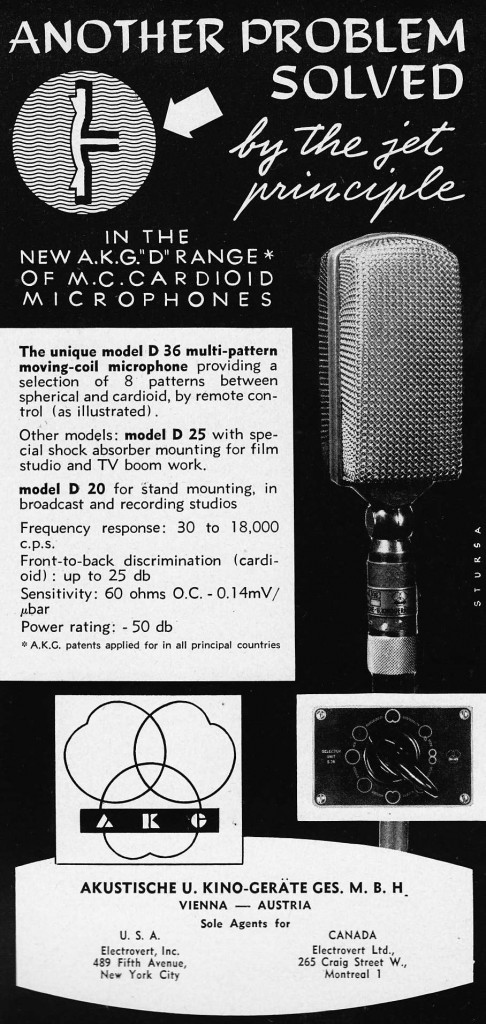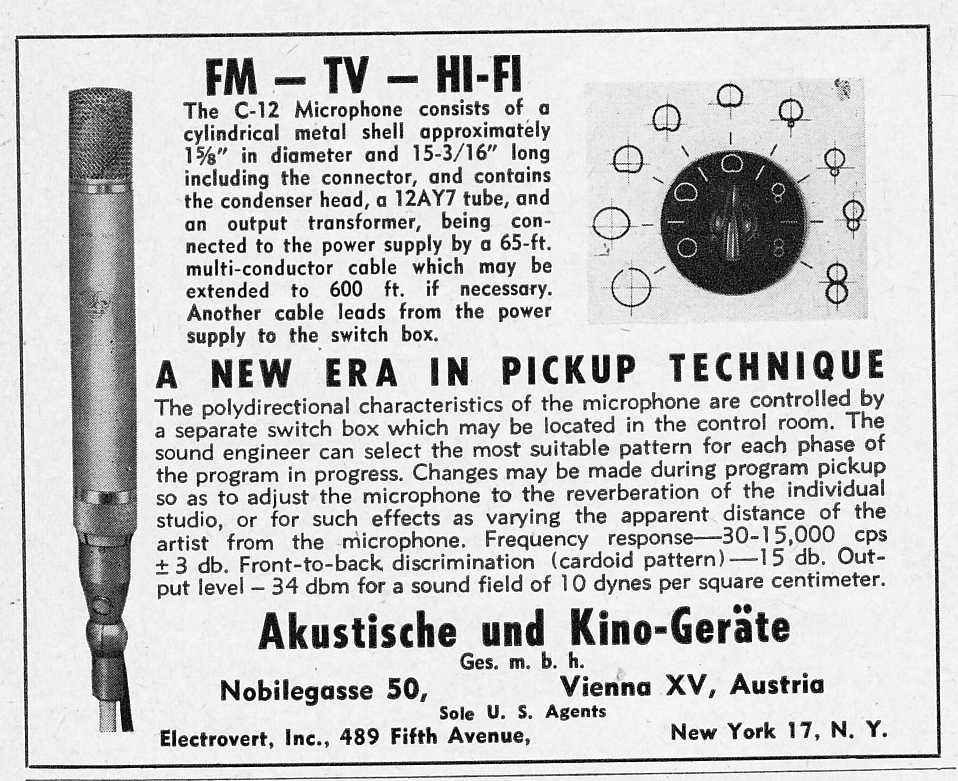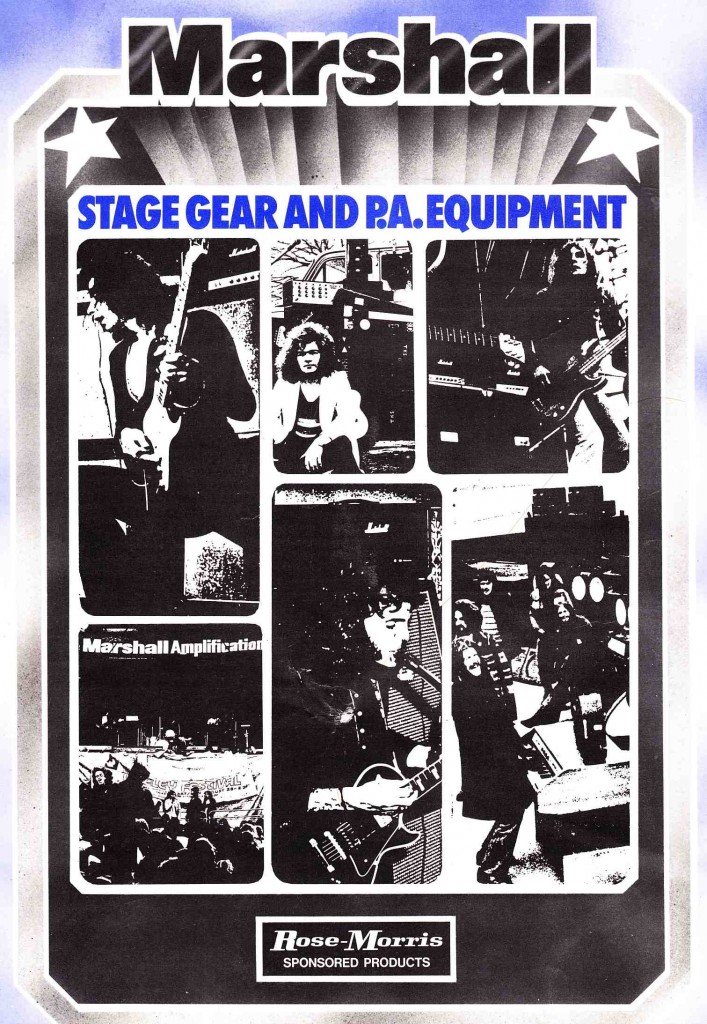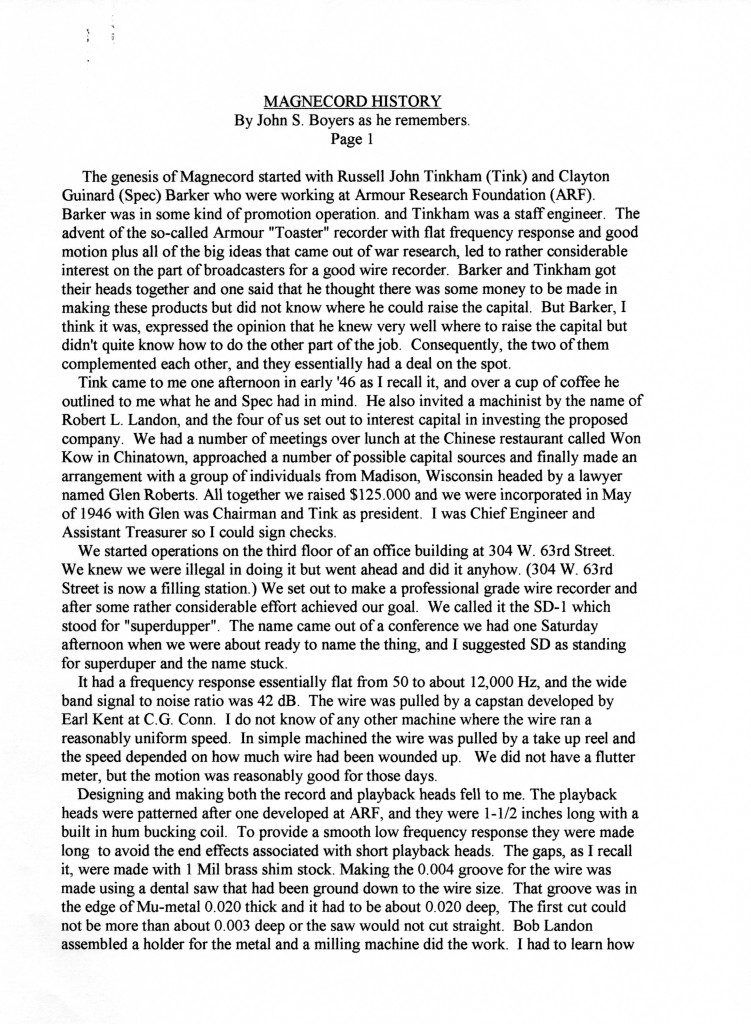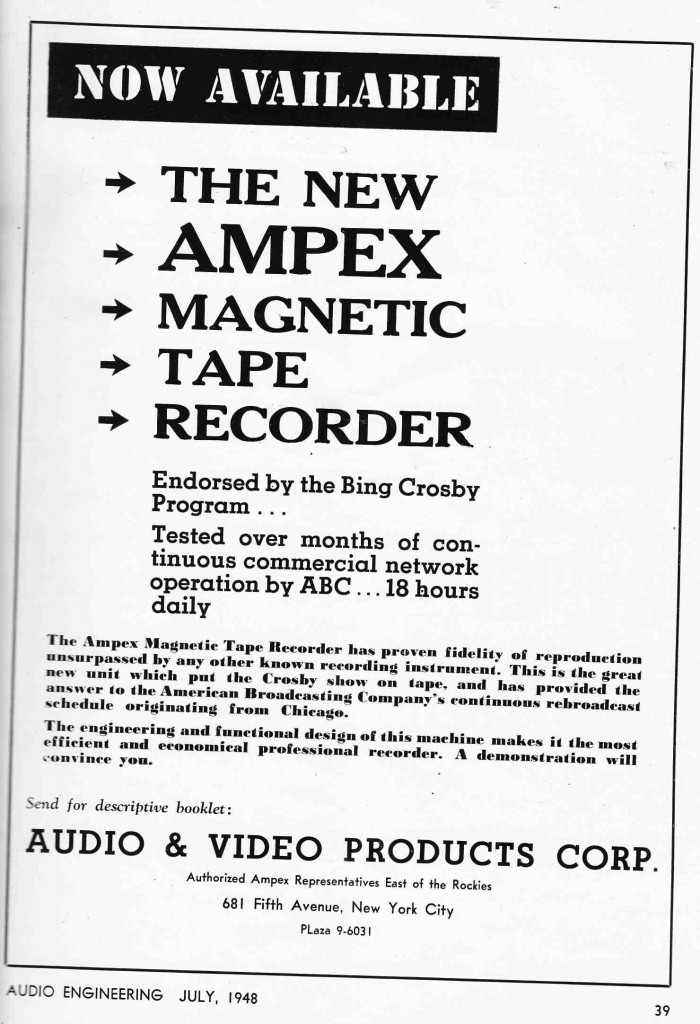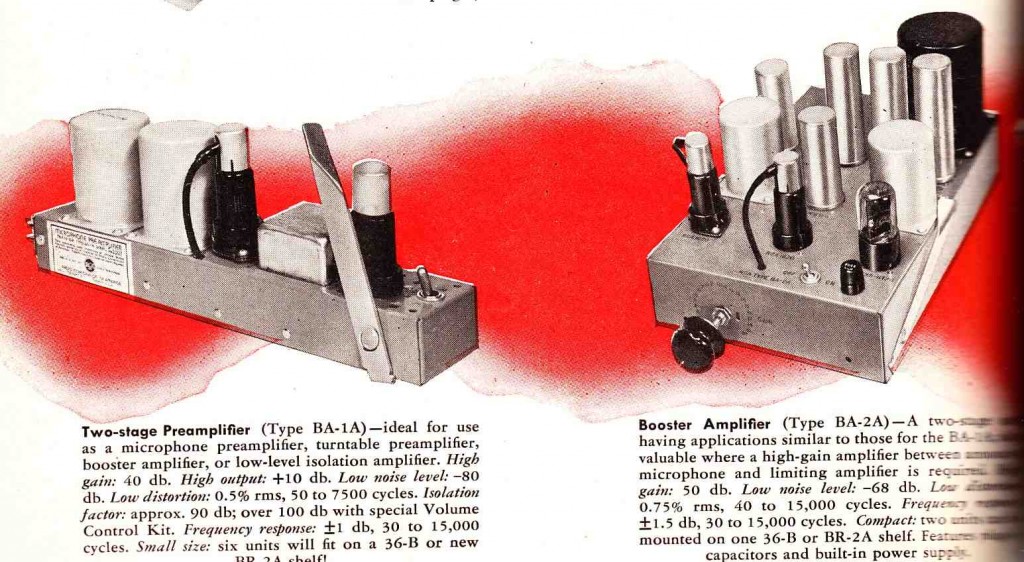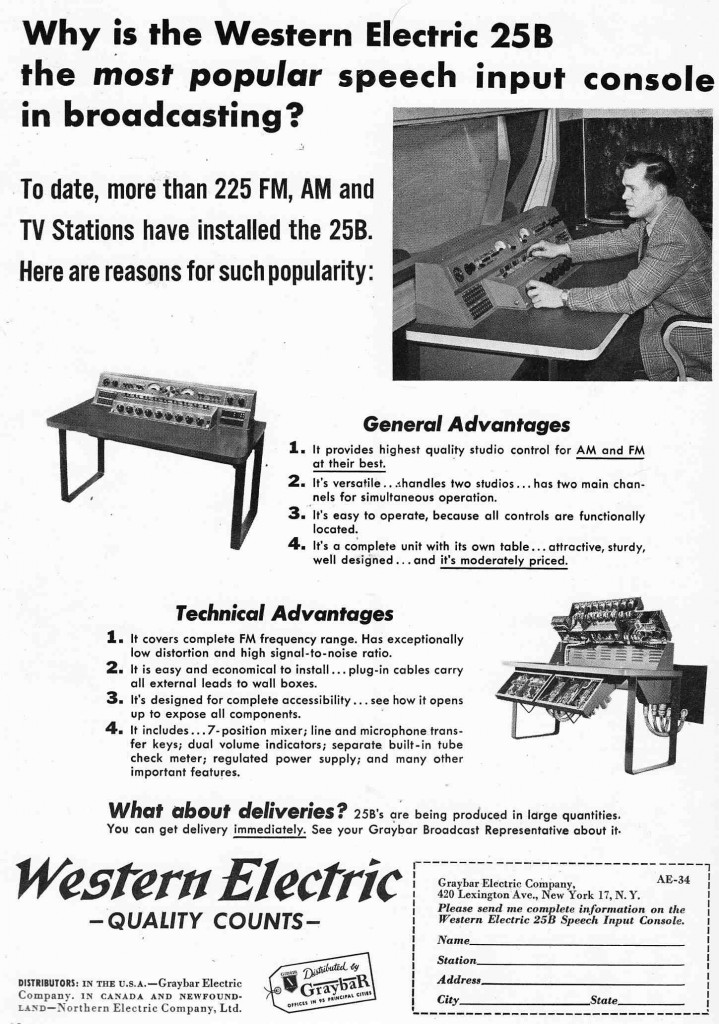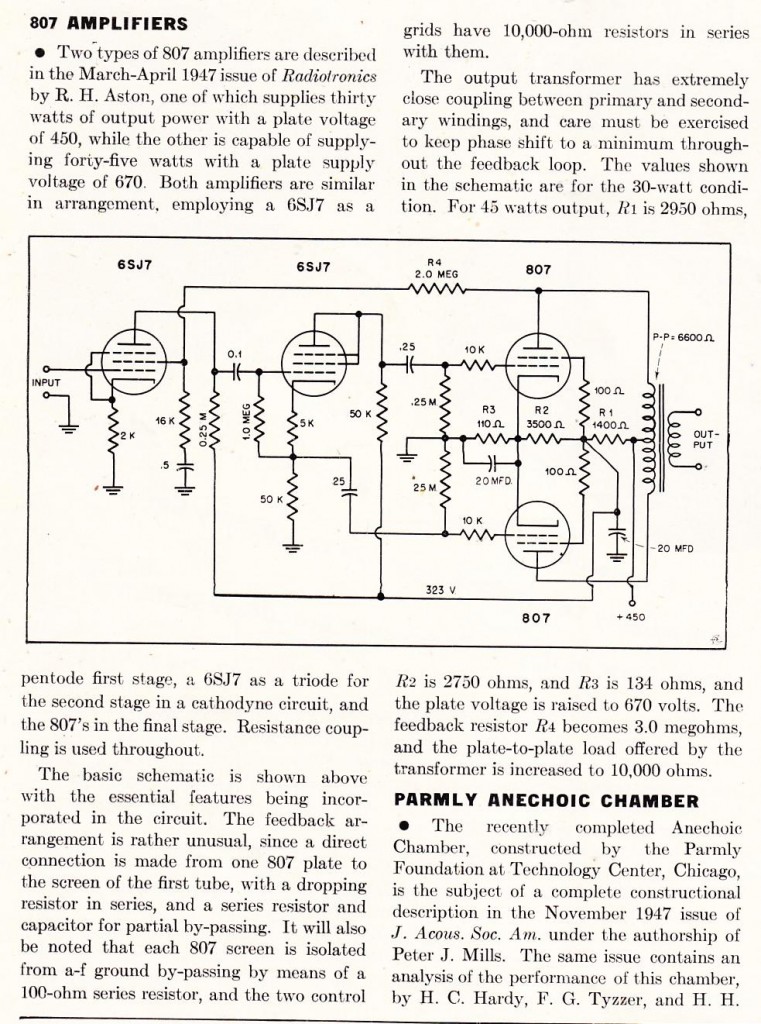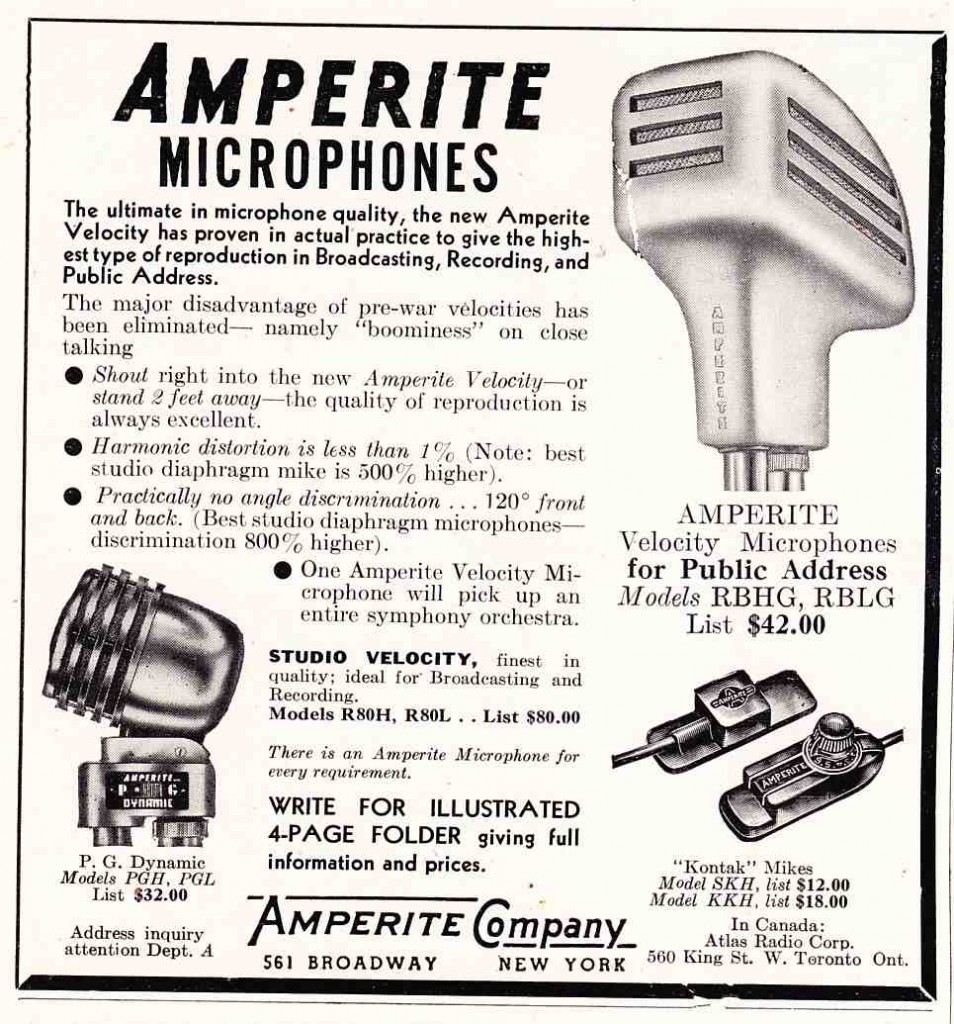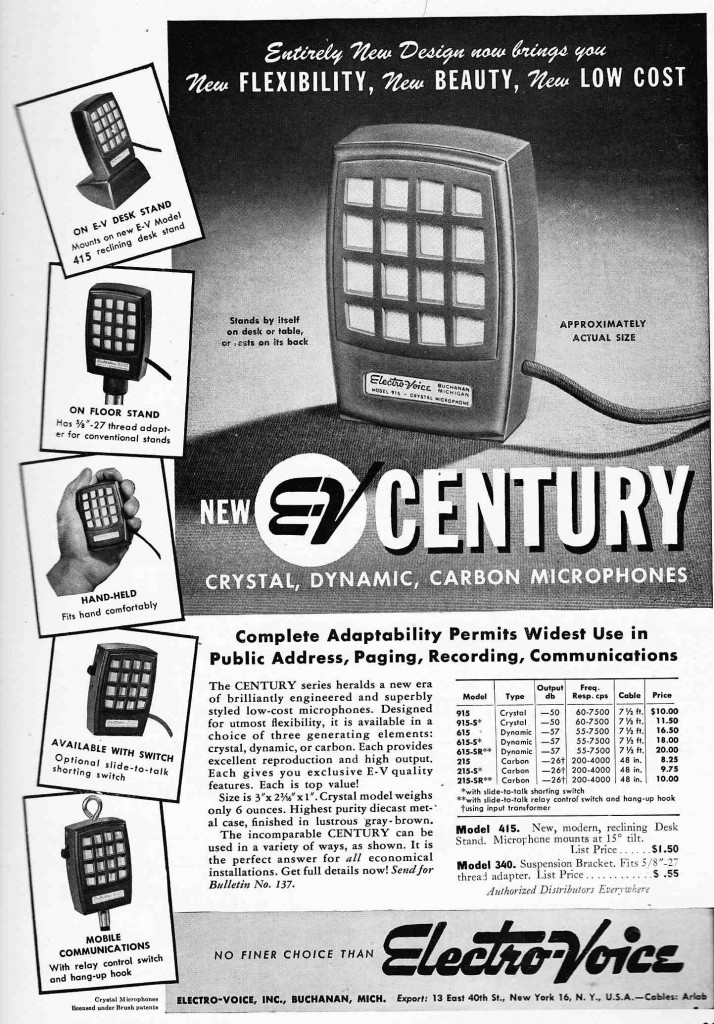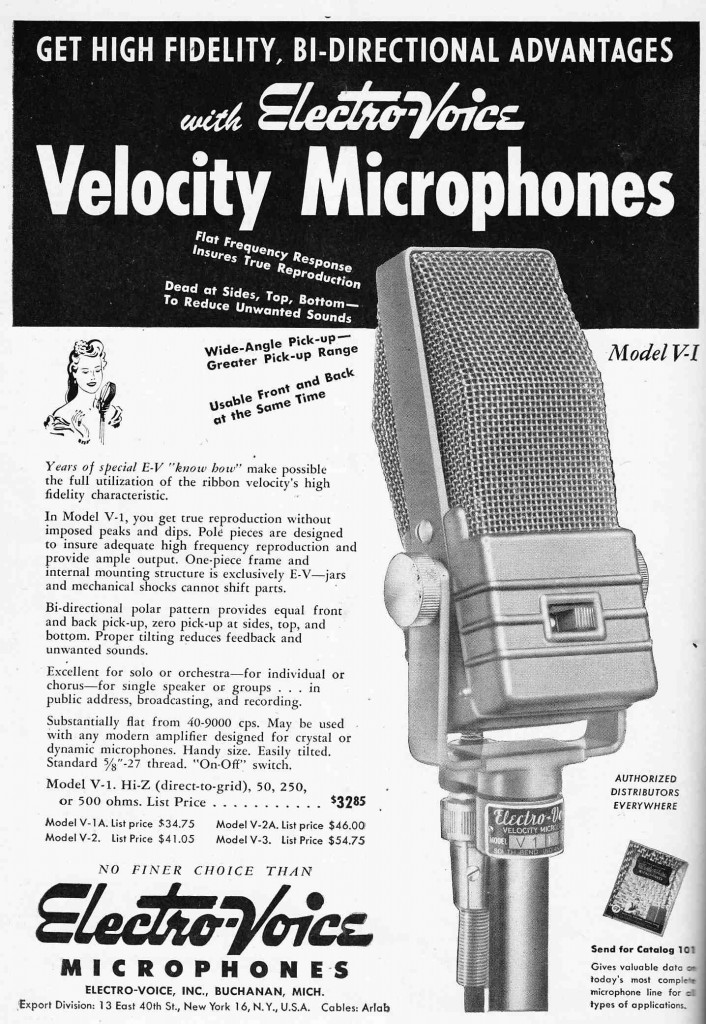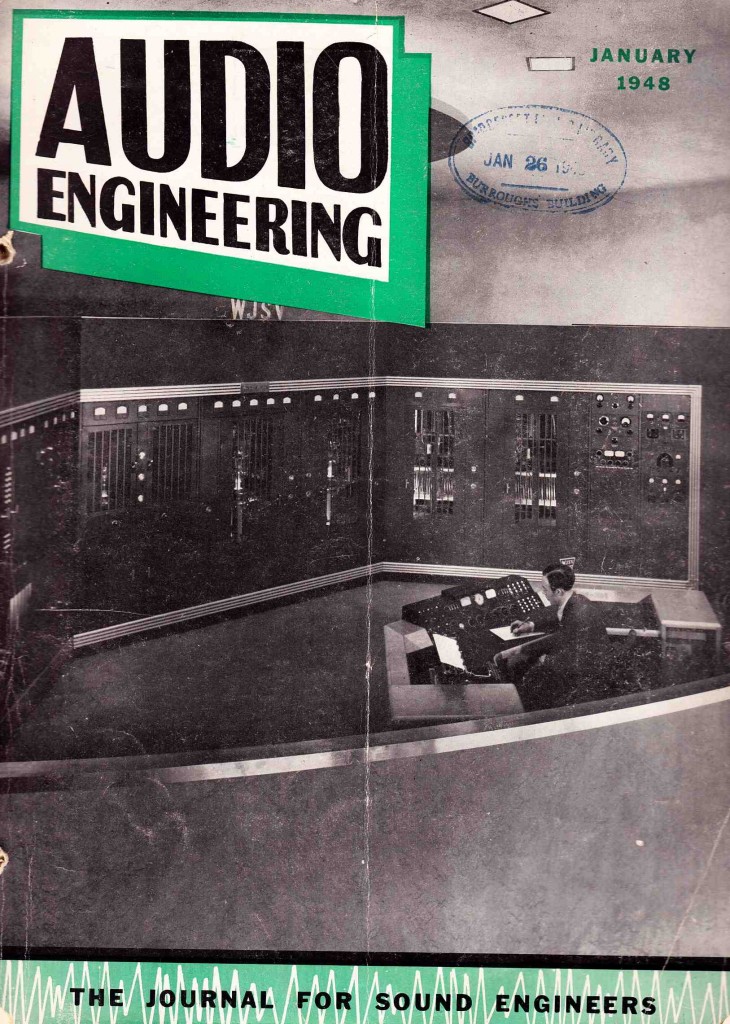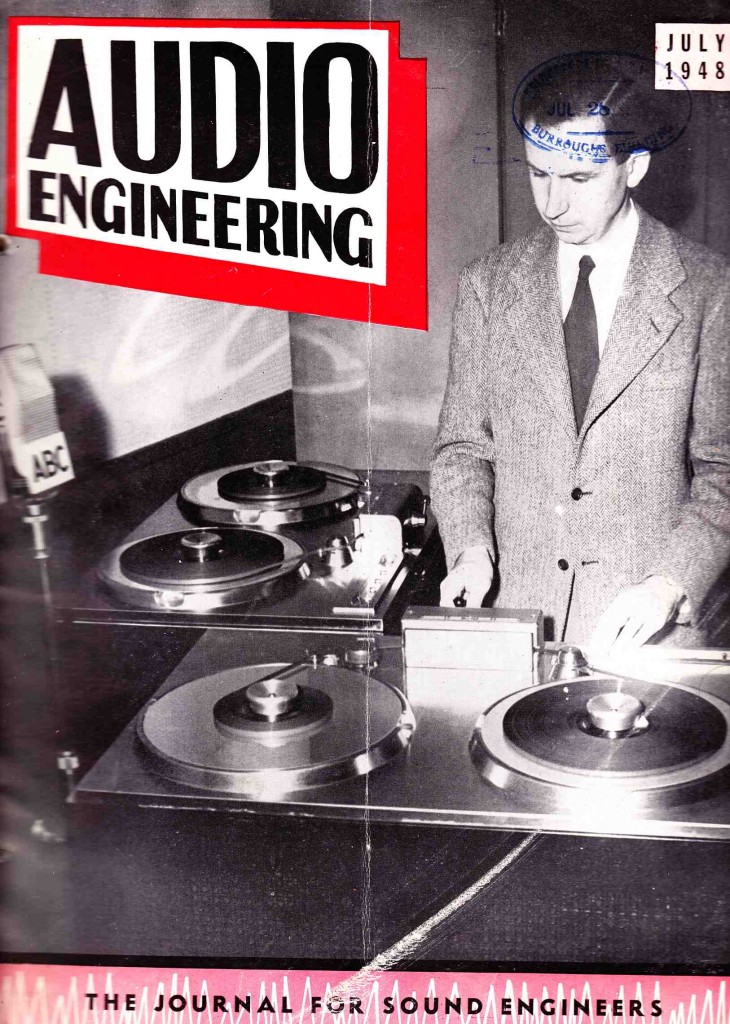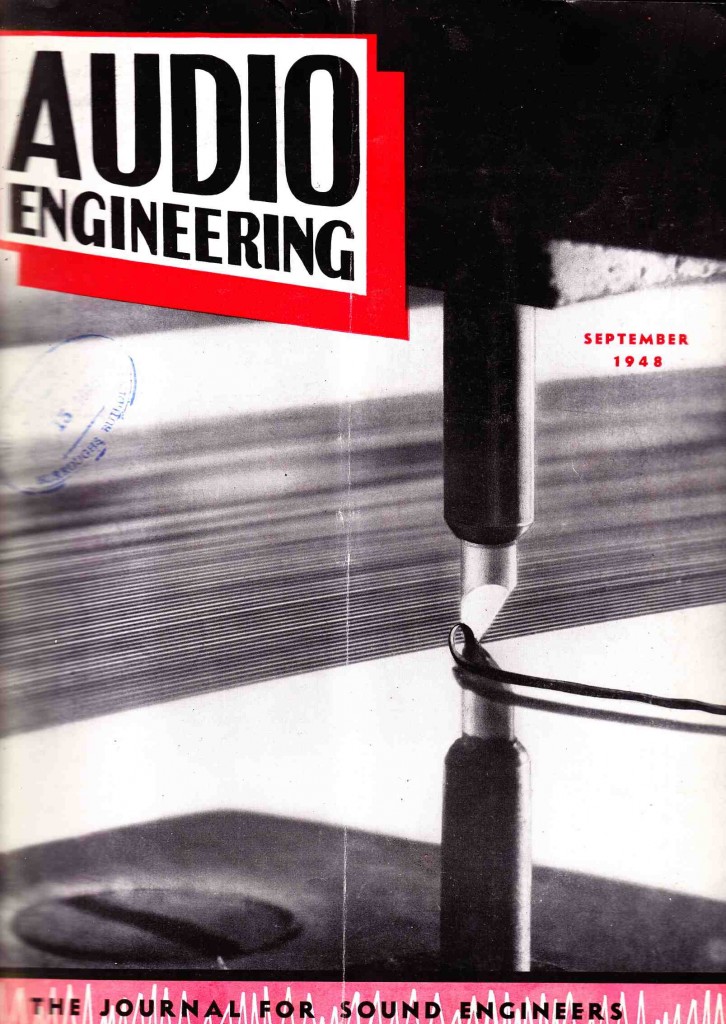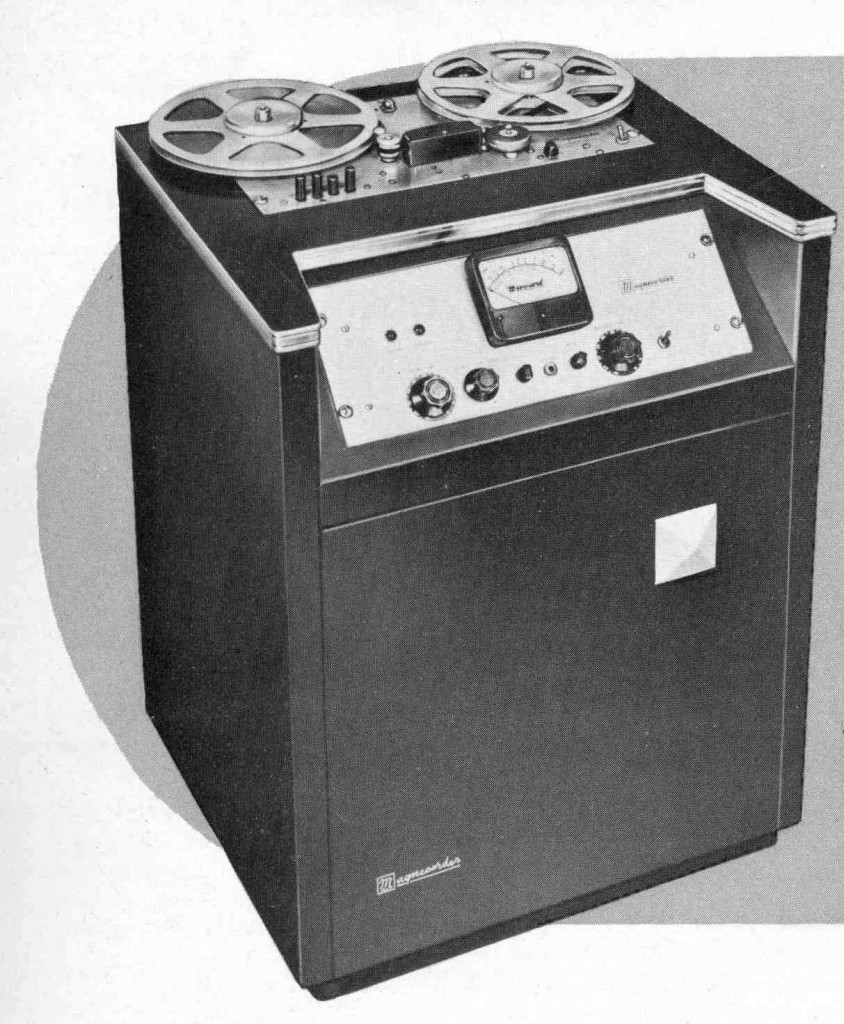 From the personal archive of John Boyers, founding partner of Magnecord INC, we present the complete circa 1953 Magnecord INC catalog. Click the link below to download the eight-page PDF:
From the personal archive of John Boyers, founding partner of Magnecord INC, we present the complete circa 1953 Magnecord INC catalog. Click the link below to download the eight-page PDF:
DOWNLOAD: Magnecord_Catalog_Circa1953
Products covered, with text and photos, include: Magnecord PT6-A Recorder Mechanism, PT6-R line-level input amplifier and PT6-J Mic-level input/output amplifier; PT63-A three-head recorder and companion PT63-J amplifier; the full line of PT6-series accessories, including the PT6-HT ‘turnover’ panel, PT6-IM3 and PT6-IM4 microphone-level input mixers, PT6-M ten-inch reel adapter mechanism, PT6-EL continuous loop panel (really confused as to how on earth this thing works). Also includes the Magnecord PT7-A, PT7-M, PT7-C series of recorders/amplifiers, which offered slightly improved audio specs relative to the PT-6 series.
 Click the ‘Magnecord’ link in the right-hand ‘Categories’ column of the homepage to see much more Magnecord coverage on PS dot com.
Click the ‘Magnecord’ link in the right-hand ‘Categories’ column of the homepage to see much more Magnecord coverage on PS dot com.
